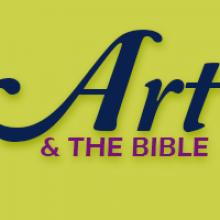
Luke 22
7 Then the day of Unleavened Bread came. That was the time the Passover lamb had to be sacrificed. 8 Jesus sent Peter and John on ahead. "Go," he told them. "Prepare for us to eat the Passover meal." 9 "Where do you want us to prepare for it?" they asked. 10 Jesus replied, "When you enter the city, a man carrying a jar of water will meet you. Follow him to the house he enters. 11 Then say to the owner of the house, 'The Teacher asks, "Where is the guest room? Where can I eat the Passover meal with my disciples?" ' 12 He will show you a large upstairs room with furniture in it. Prepare for us to eat there." 13 Peter and John left. They found things just as Jesus had told them. So they prepared the Passover meal. 14 When the hour came, Jesus and his apostles took their places at the table. 15 He said to them, "I have really looked forward to eating this Passover meal with you. I wanted to do this before I suffer. 16 I tell you, I will not eat the Passover meal again until it is celebrated in God's kingdom." 17 After Jesus took the cup, he gave thanks. He said, "Take this cup and share it among yourselves. 18 I tell you, I will not drink wine with you again until God's kingdom comes." 19 Then Jesus took bread. He gave thanks and broke it. He handed it to them and said, "This is my body. It is given for you. Every time you eat it, do it in memory of me." 20 In the same way, after the supper he took the cup. He said, "This cup is the new covenant in my blood. It is poured out for you. 21 But someone here is going to hand me over to my enemies. His hand is with mine on the table. 22 The Son of Man will go to his death, just as God has already decided. But how terrible it will be for the one who hands him over!" 23 The apostles began to ask each other about this. They wondered which one of them would do it.
John 13
20 What I'm about to tell you is true. Anyone who accepts someone I send accepts me. And anyone who accepts me accepts the One who sent me." 21 After he had said this, Jesus' spirit was troubled. Here is the witness he gave. "What I'm about to tell you is true," he said. "One of you is going to hand me over to my enemies." 22 His disciples stared at one another. They had no idea which one of them he meant. 23 The disciple Jesus loved was next to him at the table. 24 Simon Peter motioned to that disciple. He said, "Ask Jesus which one he means." 25 The disciple was leaning back against Jesus. He asked him, "Lord, who is it?" 26 Jesus answered, "It is the one I will give this piece of bread to. I will give it to him after I have dipped it in the dish." He dipped the piece of bread. Then he gave it to Judas Iscariot, son of Simon. 27 As soon as Judas took the bread, Satan entered into him. "Do quickly what you are going to do," Jesus told him. 28 But no one at the meal understood why Jesus said this to him. 29 Judas was in charge of the money. So some of the disciples thought Jesus was telling him to buy what was needed for the Feast. Others thought Jesus was talking about giving something to poor people. 30 As soon as Judas had taken the bread, he went out. And it was night.
Scripture taken from the Holy Bible,
NEW INTERNATIONAL READER'S VERSION (NIRV) ®.
Copyright © 1996, 1998 Biblica. All rights reserved throughout the world. Used by permission of Biblica.
LAST SUPPER
circa 1480
Artist: Domenico Ghirlandaio
Location: Fresco at Cenacolo di Ognissanti, Florence, Italy

It is likely that Leonardo da Vinci, who painted “The Last Supper” in the 1490’s, was already familiar with Ghirlandaio's treatment of the Last Supper, as well as that of Castagno, and painted his own Last Supper in a more dramatic form to contrast with the stillness of these works, so that more emotion would be displayed. Judas is seated on the opposite side of the table which is the way he is usually depicted in paintings of “The Last Supper”.
- Look at the picture. What do you notice about the disciples?
- How are they similar or different?
- How are they positioned?
- What are their expressions on their faces and their gestures?
- What point or time in the story do you think the picture is depicting?
- What are some specific verses in the story that you see depicted in this painting?
- Who is the major character in this picture? How does the artist focus on him as the main character?
- Identify who you think each disciple in the story is in the picture. (at least the main characters)
- Why do you think Judas is facing the opposite direction on the opposite side of the table?
- Which of the disciples do you think you might have been if you were there? (according to their character and actions)
- How do you think the true story may have been different than the painting?
- Paintings of this story are often in monasteries so that the priests and monks could see them daily.
- Why was it important for them to be reminded of this story daily?
- What are some points in this story that we need to be reminded of daily?
- What do you think is the most significant point of the story?